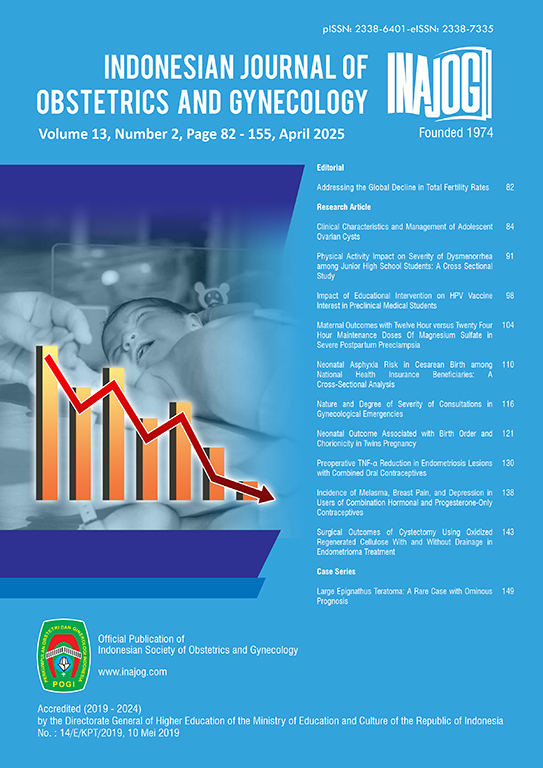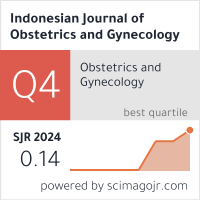Physical Activity Impact on Severity of Dysmenorrhea among Junior High School Students: A Cross Sectional Study
Abstract
Objective: This study aims to identify the prevalence of dysmenorrhea, the level of physical activity, the risk factors for dysmenorrhea and to determine the relationship between physical activity and the severity of dysmenorrhea among junior high school students.
Method: This is a cross-sectional, observational analytical study on the population of adolescence, junior high school students, conducted from July to December 2023 in Palembang. Primary data were obtained using Physical Activity Questionnaire for Older Children (PAQ-C) and working ability, location, intensity, days of pain, dysmenorrhea (WaLIDD) score.
Results: About 88.9% of students experienced primary dysmenorrhea, with 34.4% experiencing mild dysmenorrhea, 38.9% experiencing moderate dysmenorrhea, and 15.6% experiencing severe dysmenorrhea. The level of daily physical activity performed by the students was 43.3% low activity, 55.6% moderate activity, and 1.1% high activity. There was no significant relationship between physical activity and the degree of dysmenorrhea (p=0.459; PR=0.828; 95% CI: 0.558-1.230). Menarche age <12 years (PR=1.186), a family history of dysmenorrhea (PR=1.225), and irregular menstrual cycles (PR=1.283) are risk factors for higher degree of dysmenorrhea.
Conclusion: There is no relationship between physical activity and the degree of dysmenorrhea. Female students mostly experience moderate primary dysmenorrhea, with the dominant level of physical activity being moderate. Menarche age <12 years, a family history of dysmenorrhea, and irregular menstrual cycles are risk factors for the higher degree of dysmenorrhea.
Keywords: Adolescents, primary dysmenorrhea, physical activity
Downloads
Copyright (c) 2025 Indonesian Journal of Obstetrics and Gynecology

This work is licensed under a Creative Commons Attribution-NonCommercial-ShareAlike 4.0 International License.













